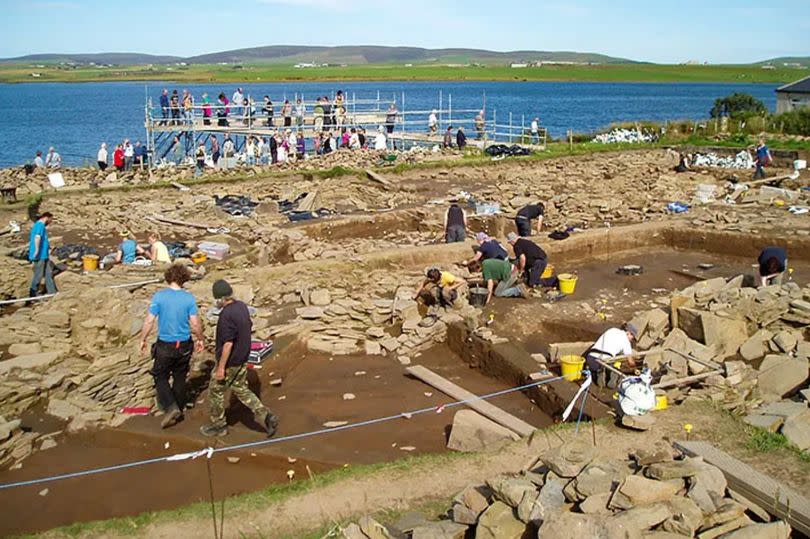The ancient Scottish city you have tiny window to see before it is buried

Tourists have just a short time to visit an ancient UNESCO World Heritage Site in Scotland before it is buried.
People with an interest in archeology and history will need to be quick if they want to catch a glimpse of the Ness of Brodgar on the Orkney Islands. The site, which was discovered in 2003, will soon be covered up again after two decades of meticulous excavation.
As reported by The Mirror, the fascinating location will be converted back into a green field after research is completed. If you want to check it out for yourself, you have just a few months left to do so.
Officials working on the research project commented: "At the end of the 2024 dig season, the trenches will be filled in and the site returned to being a green field. That ensures the structures are protected for future generations of archaeologists to continue the work we started undoubtedly using even better scientific techniques than available now.
"The reason is quite simple. The stone used in the monumental buildings degrades very quickly if left exposed to the elements. So leaving them uncovered is not an option. The long-term survival of the Ness complex is paramount."
Sitting between the Ring of Brodgar and the Stones of Stenness in the Heart of Neolithic Orkney World Heritage Site, the site covers around 2.5 hectares on the main Island of Orkney. During the 21-year excavation, six-metre-thick stone walls were discovered — presumably to help defend against the brutal North Sea winds.

Among the incredible buildings unearthed was a Neolithic temple, believed to have been built between 3,300 and 3,200 BC. However, scientists concluded that the ancient city was mysteriously abandoned around 3,000 years ago.
The project leaders continued: "Although digging could continue for decades, our work on the major structures uncovered so far will be complete and we feel we have reached a logical place to pause.
"However, although on-site excavation will end, the Ness of Brodgar research project continues. It is simply moving into a new and exciting phase of intensive post-excavation work, with the focus shifting to the scientific analysis of the recovered material – pottery, stone tools, bone and much more.
"All of this must be fully catalogued and carefully examined by specialists. Since excavation began we have welcomed and are indebted to hundreds of volunteers who have helped with the work."
Unlike the neighbouring Skara Brae site, the Ness of Brodgar can't be left exposed due to its soft quarried stone construction. The delicate nature of its stones mean it must be carefully covered with sheets and polythene tunnels each winter.
Those keen to visit after the excavation concludes this summer will need to get in touch with the Ness team in advance to organise a private tour. More information can be found on the Orkney official website.
Don't miss the latest news from around Scotland and beyond - sign up to the Scotland Now newsletter here.

 Yahoo News
Yahoo News 
